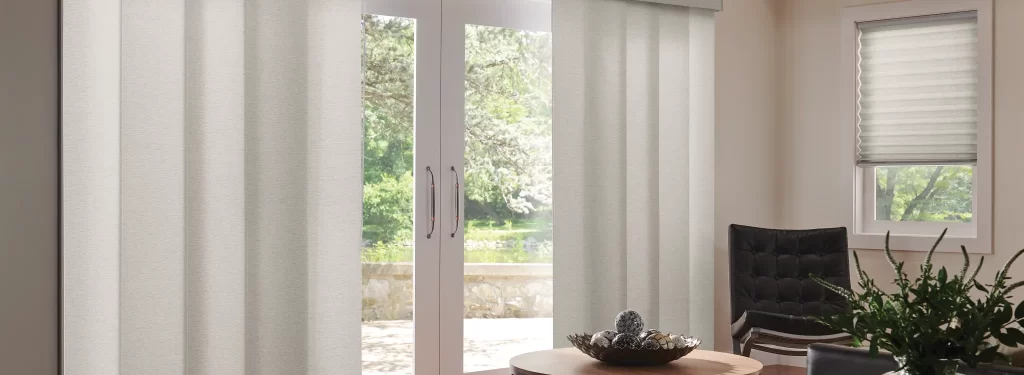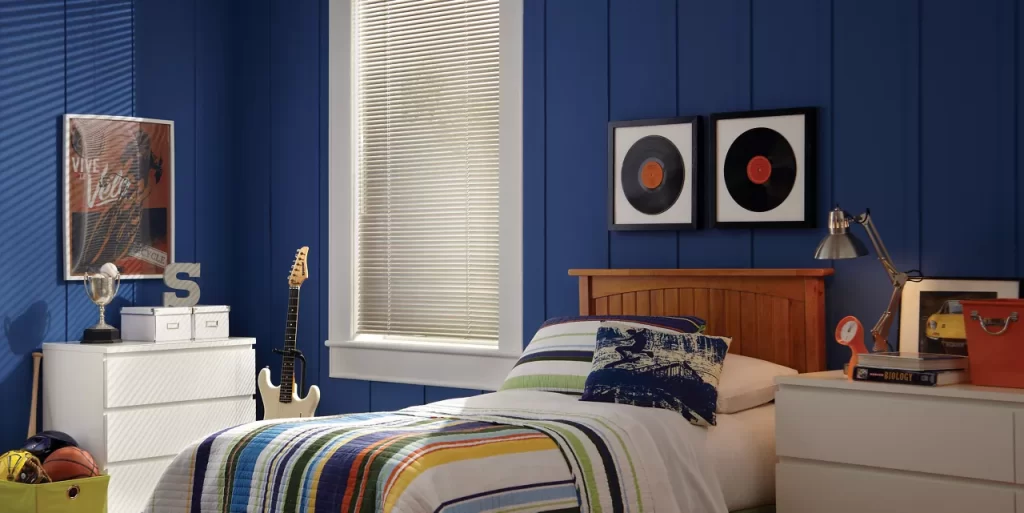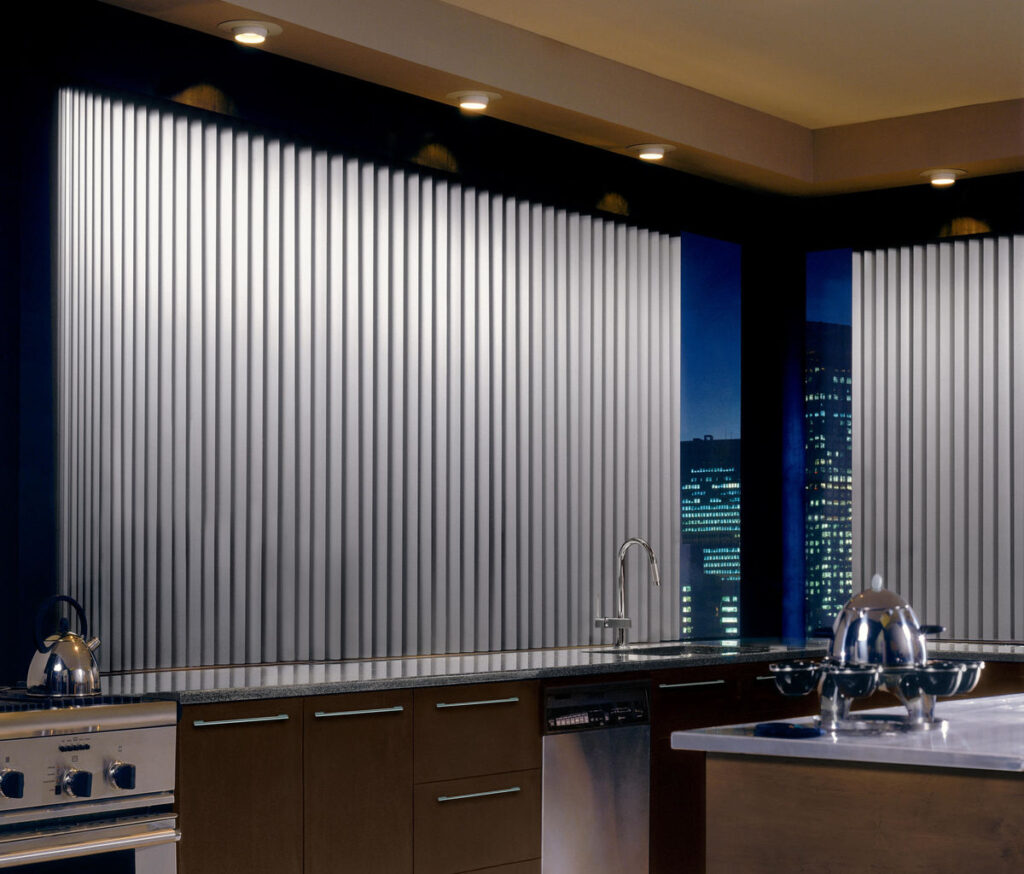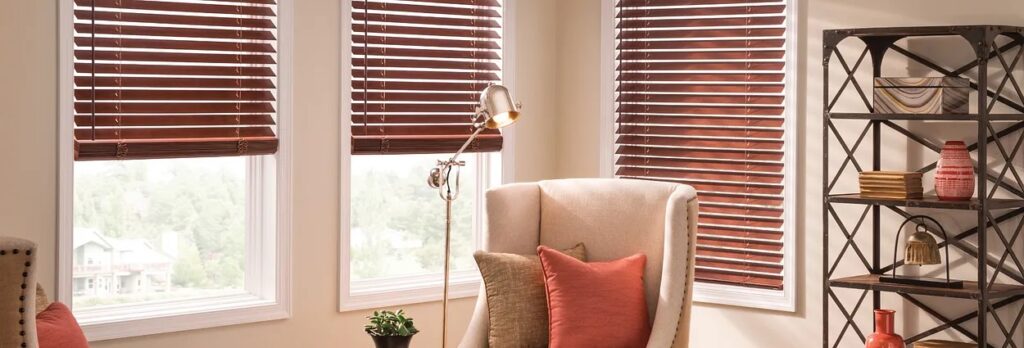Are you looking to update your current window treatments? Perhaps you want new blinds in your living room but you do not know anything about blind installation. If so, this article is for you.
In this article, we will go over how to prepare your blinds for installation, how to install blinds, maintenance tips for blinds, and how to find the right blinds for your particular situation.
Click on each corresponding link to jump ahead:
- How to Prep Your Windows for Blind Installation
- How to Install Blinds
- Maintenance Tips for Blinds
- How to Find the Right Blinds for Your Windows
If you require professional assistance with blind installation and choosing the right blinds for your space, contact us directly.
Everything You Need to Know About Blind Installation

Continue reading and become an expert about blind installation!
1. How to Prep Your Windows for Blind Installation
Prepping a window for blind installation involves several steps to ensure a successful and secure installation. Here is a general guide to help you prepare a window for blind installation:
A) Clear the Area
Before you start blind installation, it’s important to clear the area around the window to create a clean and clutter-free workspace. Here’s what you should do:
- Remove any existing curtains, drapes, or other window coverings. Take them down and set them aside if you plan to reuse them.
- Clear any furniture or objects that might obstruct your access to the window. This includes items like chairs, tables, or decorations that may be in the way.
Clearing the area ensures that you have enough space to work comfortably and allows you to access the window frame and wall surface more easily.
B) Clean the Window and Surrounding Area
Cleaning the window and the area around it is essential to ensure a smooth and secure blind installation. Here’s how to do it:
- Start by cleaning the window glass using a glass cleaner and a clean cloth or paper towels. Make sure to remove any dust, dirt, smudges, or fingerprints from the glass surface. This not only improves the appearance but also ensures that your blinds will look their best once installed. Click here to learn how to properly clean windows.
- Next, clean the surrounding window frame and sill. Dust and dirt can accumulate on these surfaces over time, so use a damp cloth to wipe them down. Pay attention to any nooks and crannies where debris may have gathered.
- Inspect the window track or opening where the blinds will be installed. Ensure that it’s free of obstructions, debris, or any loose materials that could interfere with the blinds’ operation.
Cleaning the window and its surroundings not only helps with the installation but also improves the overall aesthetics of the window area.
C) Inspect the Window Frame
Inspecting the window frame is crucial to identify and address any issues that could affect blinds installation or operation. Here’s what to look for:
- Check the window frame for any visible damage, such as cracks, rot, or warping. Repair or replace any damaged sections as needed to ensure a sturdy mounting surface.
- Inspect the corners and edges of the window frame to ensure they are square and in good condition. Irregularities in the frame can lead to alignment problems during installation.
- Verify that any existing hardware on the window frame, such as locks or handles, is secure and not loose. Tighten any loose hardware to prevent interference with the blinds.
By carefully inspecting the window frame, you can address any issues before installing the blinds, ensuring a stable and secure mounting surface for the blinds’ brackets or mounting hardware. This helps to prevent future problems with the blinds’ operation or stability.
2. How to Install Blinds
Installing blinds can be a challenging task. Watch the video below and continue reading to learn how to install blinds. If you require professional assistance with your blind installation, contact us.
Watch this video to learn how to install blinds, and continue reading for more blind installation tips!
Required Materials and Tools for Blind Installation
- Blinds
- Mounting brackets and screws
- Measuring tape
- Pencil
- Level
- Screwdriver or drill
- Wall anchors (if necessary)
This is not an exhaustive list, meaning more materials and tools may be required for blind installation. If you run into any troubles along the way, or you do not have the necessary tools to complete this task, let Graham’s & Son handle it.
A) Measure the Window
- Measure the width and height of your window frame to determine the appropriate size for your blinds. Blinds should be slightly narrower than the window opening to allow for proper operation.
B) Choose the Mounting Location
- Determine whether you want to mount the blinds inside the window frame (inside mount) or on the wall or window frame outside the window (outside mount). This decision will affect the location of your brackets.

Here is an example of an outside mounted pair of blinds.
C) Mark the Bracket Locations
- For an inside mount, measure and mark the positions for the brackets inside the window frame, typically at the top corners.
- For an outside mount, mark the bracket locations on the wall or window frame above the window.
D) Use a Level
- Ensure that the bracket positions are level. Use a level to make sure the blinds hang straight and even.
E) Pre-Drill Holes
- If you’re mounting the blinds on drywall or a similar surface, it’s a good idea to pre-drill holes for the screws. This helps prevent the wall from splitting or cracking during the blind installation.
- If you’re installing the blinds on wood or a sturdy material, you may be able to skip this step.

Pre drill holes to get a professional looking set of blinds.
F) Install Brackets
- Attach the mounting brackets to the marked positions using screws. Make sure they are securely fastened. If the blinds are heavy or the brackets are not aligned with wall studs, you may need to use wall anchors for extra support.
G) Attach the Blinds
- Depending on the type of blinds you have, you’ll either slide them into the brackets or attach them using clips or hooks.
- Follow the manufacturer’s instructions for attaching the blinds to the brackets, as the specific method can vary.
H) Test the Operation
- Once the blind installation is complete and they are securely attached, test their operation. Open and close them to ensure they move smoothly and evenly.
I) Adjust as Needed
- If the blinds are not level or do not hang straight, make any necessary adjustments by loosening the brackets, repositioning them, and tightening them again.
Always follow the specific instructions provided by the blind manufacturer, as blind installation methods can vary based on the type and design of the blinds you have. Properly installed blinds not only enhance the appearance of your windows but also function safely and effectively.
3. Maintenance Tips for Blinds

You must regularly maintain your blinds to ensure they operate properly and last.
Maintaining your blinds properly can extend their lifespan and keep them looking and functioning at their best. Here are some maintenance tips for blinds along with explanations of why they are important:
A) Regular Cleaning
- Importance: Dust and dirt can accumulate on blinds over time, affecting their appearance and indoor air quality. Regular cleaning prevents the buildup of allergens and maintains the blinds’ aesthetics.
- How to Do It: Use a duster, microfibre cloth, or vacuum cleaner with a brush attachment to remove dust and dirt from the blinds’ slats. For deep cleaning, you can take down the blinds and soak them in a mild detergent solution. Click here to learn how to clean all sorts of window treatments.
B) Check for Damage
- Importance: Regular inspections help identify any damage, such as broken slats, bent or warped components, or malfunctioning cords or mechanisms. Addressing issues promptly prevents further damage and ensures safe operation.
- How to Do It: Examine the blinds periodically, paying attention to each slat, cords, and mechanisms. Replace or repair damaged parts as needed.
C) Adjust the Cords and Mechanisms
- Importance: Properly functioning cords and mechanisms are essential for the blinds’ ease of use and safety. Loose or tangled cords can pose a hazard, especially in homes with children or pets.
- How to Do It: Regularly check the cords for tangles or knots and untangle them if necessary. Ensure that cord stops and safety devices are in place and functioning as intended. If your blinds are stuck, check out our five issues and and solutions.

Do not forget to test your blinds after blind installation is complete.
D) Clean and Lubricate Mechanisms
- Importance: Over time, the moving parts and mechanisms of blinds may accumulate dust and debris, causing friction and making them harder to operate. Cleaning and lubricating these parts can maintain smooth operation.
- How to Do It: Remove dust and debris from mechanisms using a brush or compressed air. Apply a small amount of silicone-based lubricant to moving parts as recommended by the manufacturer.
E) Store Blinds Properly
- Importance: If you need to store blinds temporarily (e.g., during a move or home renovation), proper storage prevents damage and deformation.
- How to Do It: Store blinds in a cool, dry place away from direct sunlight and extreme temperatures. Use appropriate storage containers or covers to protect them from dust and damage.
Once blind installation is complete, regularly maintain your blinds to increase their lifespan, ensure they are operating properly and looking beautiful.
4. How to Find the Right Blinds for Your Windows


Depending on your situation, you may need blackout blinds or vertical blinds.
Choosing the right blinds for your windows can enhance your home’s aesthetics and functionality. Therefore, it is essential that you choose the right blinds for your windows. Here are some tips to help you find the perfect blinds for your windows:
A) Determine Your Goals and Needs
- Consider your primary objectives. Are you looking for privacy, light control, energy efficiency, or purely decorative purposes? Identifying your needs will guide your blind selection.
B) Consider Window Type and Location
- Different types of blinds may be more suitable for specific window types. For example, large windows may benefit from vertical blinds, while smaller ones may work well with horizontal options. Consider the location of the window (e.g., high humidity areas like bathrooms) to choose moisture-resistant materials.
C) Choose the Right Blind Material
- Select blinds made from materials that suit your needs. Common options include wood, faux wood, aluminum, fabric, and vinyl. Each material has its advantages and drawbacks, such as durability, moisture resistance, and insulation properties.

Here is an example of faux wood blinds.
E) Consider Light Control Options
- Some blinds offer better light control than others. For instance, blackout blinds are excellent for bedrooms, while sheer or solar shades provide a softer, diffused light. Decide how much light you want to filter or block.
F) Evaluate Energy Efficiency
- If energy efficiency is a concern, look for blinds with insulating properties. Cellular or honeycomb blinds, for example, can help regulate indoor temperatures and reduce heating and cooling costs.

These wood blinds from Graber are also energy efficient!
G) Consider Cordless or Motorized Options
- Cordless blinds are safer for homes with children and pets and have a sleek appearance. Motorized blinds provide convenience and can be controlled remotely.
H) Get Professional Advice
- If you’re unsure about your choices, consult with a professional window treatment specialist or visit a showroom where you can see various blinds and receive expert advice.
Taking the time to carefully consider these factors will help you find blinds that not only meet your functional needs but also enhance the overall look and feel of your living space.
Graham's & Son Interiors - The Window Treatment Experts

If you would like to replace your old window treatments with high-quality blinds that will last, or if you need help with blind installation, contact the professionals at Graham’s & Son.
With almost 50 years of experience in the home interior industry, you’ll appreciate our knowledge of quality products and the customer service you receive when you have your window treatment installed by Graham’s. We provide Free In-Home Consultations and take care of the Measurements, Product Ordering, and Installation. Contact us today to select the window treatments that suit your style and budget.
We are locally owned and operated and we can provide you with gorgeous and practical window treatments for any room in your home. We will give you expert advice, quality, custom-made products, and top-notch customer service.

